
Roots
Consider for a moment the very strands that spring from your scalp. They are not merely protein filaments; they are living archives, whispered narratives of generations past, coiled heirlooms carrying the wisdom of our foremothers. In the unique architecture of Textured Hair, particularly within Black and mixed-race lineages, we find a profound connection to earth, to spirit, and to practices that predate written history.
The journey of understanding how historical oiling practices resonate within modern textured hair regimens begins here, within the very fabric of our being, a deep chord struck by ancestral hands. This is a quest into the enduring memory held within each strand, a heritage that speaks through the very care it demands.
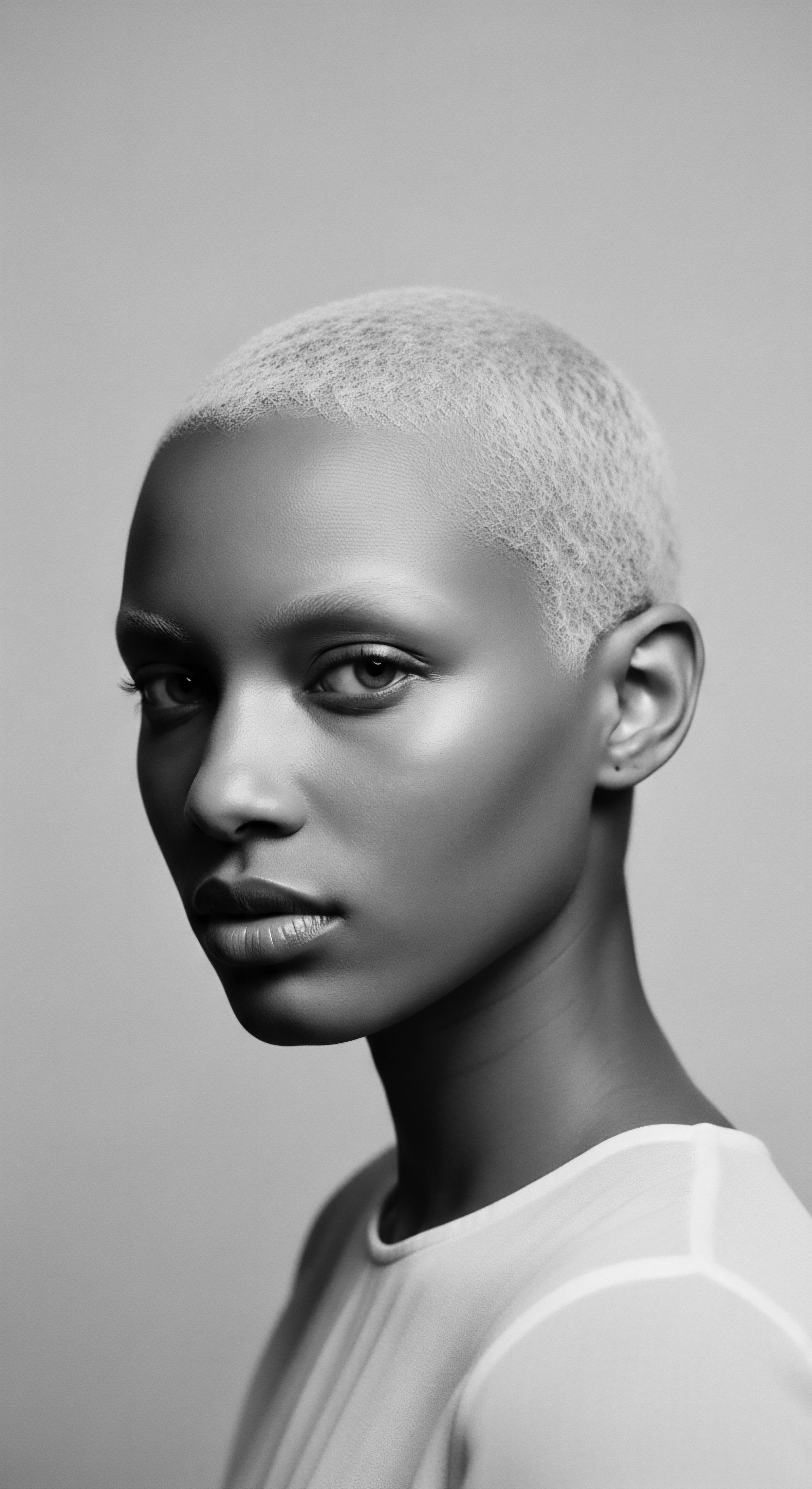
Hair’s Ancestral Architecture
The anatomy of textured hair, with its elliptical follicle shape and varied curl patterns – from loose waves to tight coils – dictates its inherent needs. These unique structural characteristics often mean that natural oils produced by the scalp struggle to descend the entire length of the hair shaft, leaving ends susceptible to dryness and breakage. Historically, communities understood this intrinsic thirst of textured hair, perhaps not through electron microscopes, but through lived experience and intuitive observation.
Ancient knowledge, passed through oral tradition, recognized that supplementing the hair’s natural moisture with external oils and butters was not simply cosmetic; it was foundational to its vitality and strength. This wisdom was not just about superficial gloss; it was about honoring the very essence of the hair’s biological design.
Textured hair, with its unique structural patterns, carries an ancestral thirst, met through generations by intuitive oiling practices that honor its innate needs.

Oils in Early Hair Stewardship
Long before the advent of industrial beauty, cultures across Africa regarded hair as a potent symbol of identity, status, and spiritual connection. Hair was sculpted, adorned, and, vitally, nourished. The application of oils and butters formed a central tenet of this stewardship. For example, in many West African societies, the use of shea butter, known as ‘nkuto’ in some local languages, was ubiquitous.
It served as a protective balm against harsh climates, a moisturizer for skin, and a hair pomade. Women would even heat metal combs, dip them in shea butter, and comb through their hair to soften and stretch it. This practice reveals an early understanding of how warmth could aid product absorption and hair manipulation, a principle that echoes in contemporary methods. Such methods weren’t documented in scientific journals of the time, but their efficacy was proven through countless generations of vibrant, healthy hair.
| Historical Approach to Textured Hair Needs Intuitive Hydration ❉ Applying natural butters and oils to combat dryness. |
| Modern Scientific Understanding Lipid Barrier Reinforcement ❉ Oils provide an occlusive layer, reducing trans-epidermal water loss and sealing moisture. |
| Historical Approach to Textured Hair Needs Scalp Massage ❉ Manual stimulation to encourage perceived hair health. |
| Modern Scientific Understanding Circulation & Follicle Stimulation ❉ Massaging increases blood flow to scalp, supporting nutrient delivery to follicles. |
| Historical Approach to Textured Hair Needs Protective Styling ❉ Braiding and coiling to minimize environmental exposure. |
| Modern Scientific Understanding Mechanical Damage Reduction ❉ Styles reduce friction and tangling, preserving length and minimizing breakage. |
| Historical Approach to Textured Hair Needs The enduring power of historical oiling lies in its alignment with hair's fundamental biological requirements, validated by contemporary insights. |

A Lexicon From History
The very terms we use today for hair care have roots that stretch into these ancestral practices. While modern systems like “type 4C” categorize hair texture, ancient communities possessed a more holistic understanding. Their language for hair often described its vitality, its ceremonial significance, or its role in social standing.
The concept of “hair Food” or “hair Medicine” was common, underscoring the understanding of oils as nourishment for growth and health, not merely a cosmetic add-on. This perspective allowed for a fluid, responsive approach to hair care, adapting to individual needs and environmental conditions, all within a communal framework of shared knowledge.

Ritual
From the foundational knowledge of hair’s inherent needs, we turn to the living art of hair care, the techniques, and tools that transformed simple application into a profound ritual. Historically, oiling was not a hasty affair; it was a deliberate act, deeply woven into the fabric of daily life and communal interaction. These practices cultivated not just physical health for the hair, but also fostered connection, identity, and shared wisdom. The continuity of these rituals speaks volumes about their efficacy and their inherent value beyond the tangible benefits.
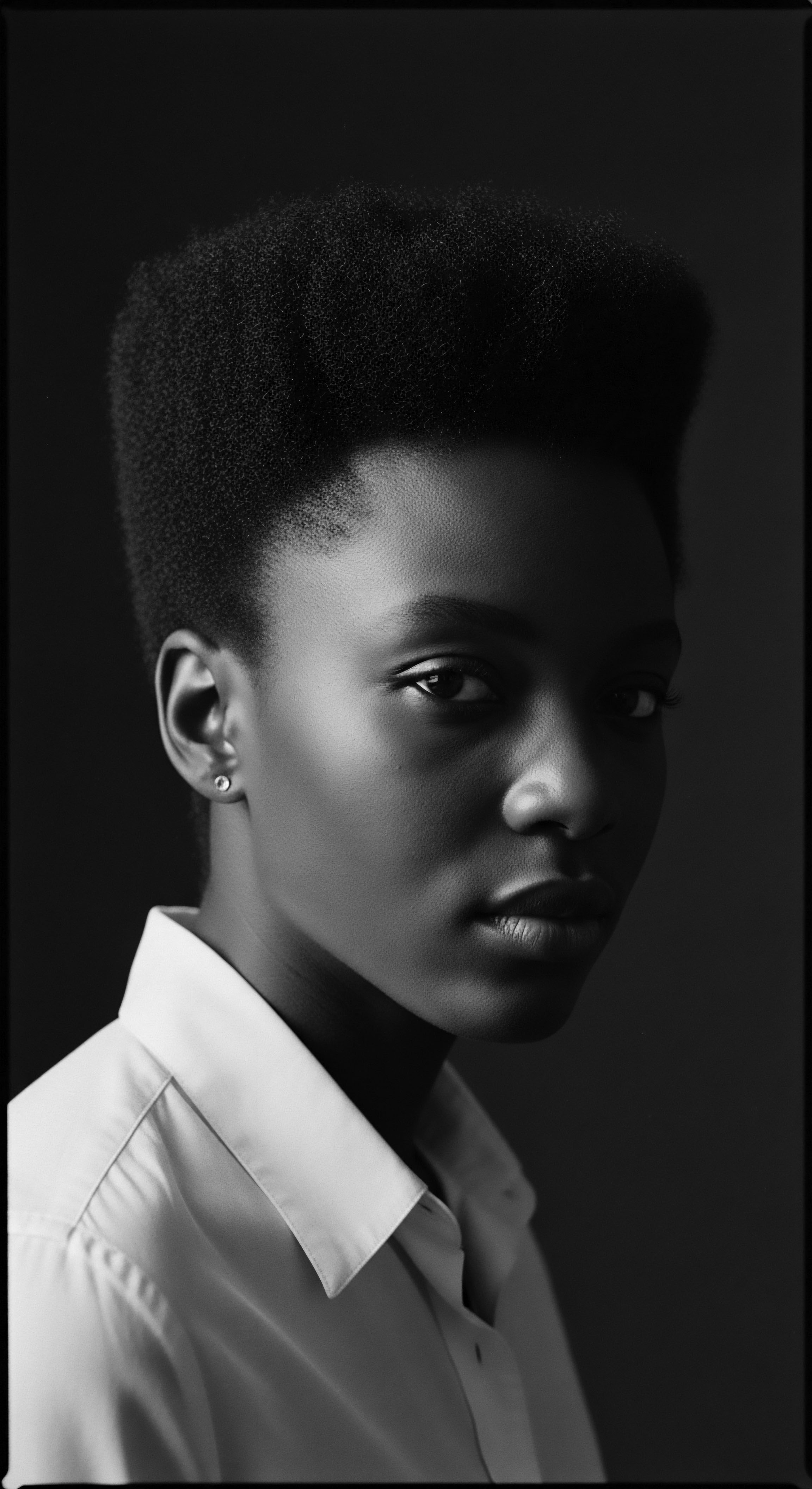
Oiling’s Role in Hair Craft
The application of oils in ancestral hair care was often inseparable from the crafting of intricate hairstyles. Think of the elaborate braids, twists, and coils that defined various African ethnic groups. Oils, or their solidified form as butters, served as lubricants, making hair more pliable and less prone to breakage during manipulation. They aided in sectioning, smoothing, and sealing moisture into strands before they were braided or twisted.
This functionality allowed for the creation of durable, protective styles that could last for extended periods, preserving the hair from environmental harshness while signifying social standing, age, or marital status. Such techniques speak to an intuitive material science, long before laboratories and chemical compounds existed.

Ancestral Roots of Protective Styling
The concept of protective styling, so popular today among those with textured hair, is a direct inheritance from these ancient practices. Cultures across Africa developed sophisticated methods to safeguard their hair. Headwraps, for instance, known as Dukus in Ghana or Doek in South Africa, served as both fashion statements and practical coverings, protecting intricate styles and preserving hair’s moisture, These coverings, often applied after hair had been oiled and styled, were an extension of the care regimen, shielding delicate strands from dust, sun, and other elements. The enduring presence of these styles and covering traditions in the diaspora testifies to their effectiveness and cultural resonance.
The consistent use of oils and protective styles across generations underscores a living heritage of hair care that prioritizes resilience and reverence.
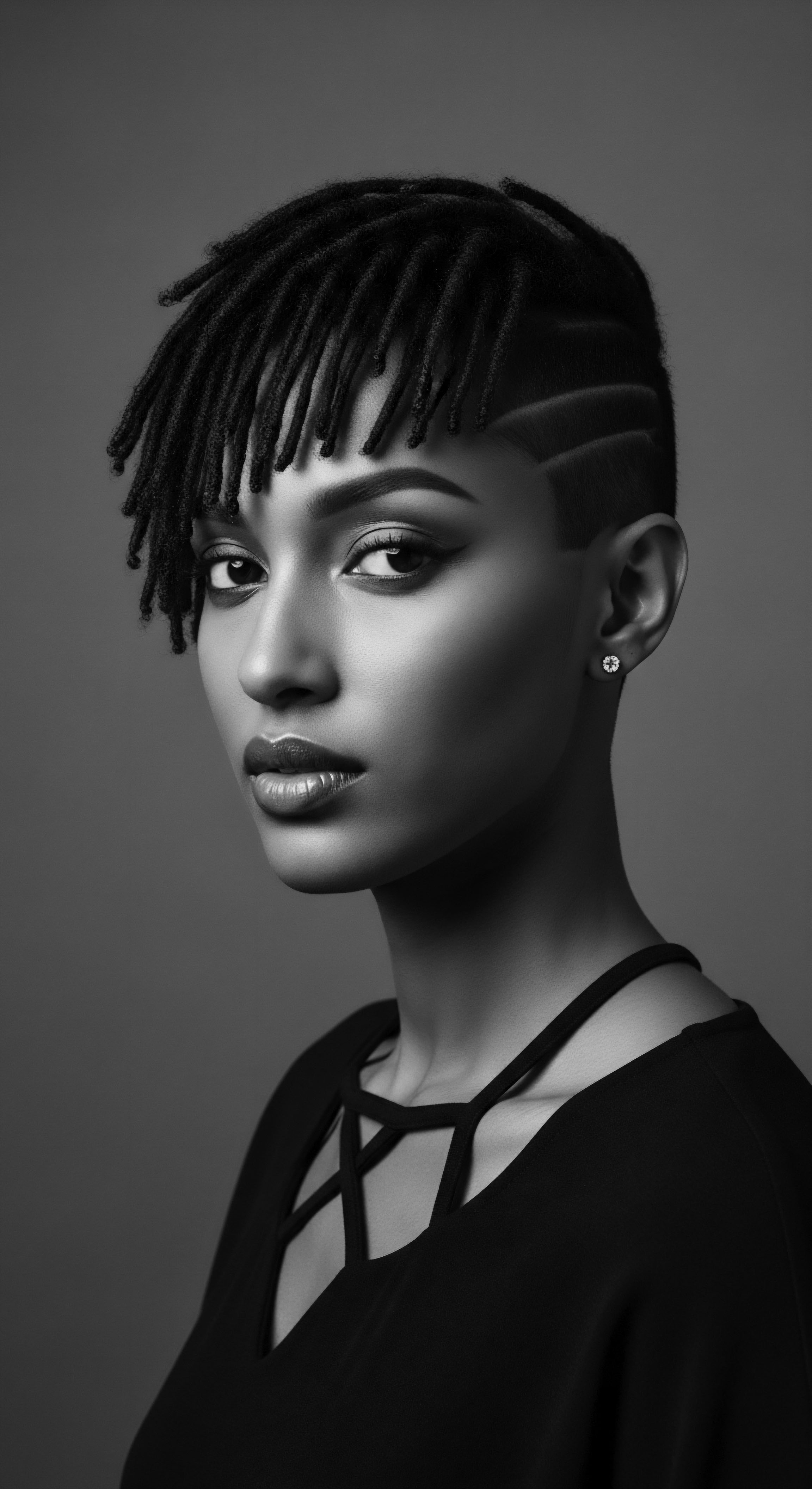
Tools as Extensions of Care
The tools accompanying these oiling rituals were equally significant. Simple combs carved from wood or bone, and vessels crafted from gourds or clay, held immense cultural weight. These were not mass-produced implements; they were often handcrafted, imbued with purpose, and passed down through families. The act of using such tools, alongside the application of oils, became a tangible link to tradition.
Consider the practice of heating metal combs and dipping them in shea butter, as observed in some Ghanaian communities. This method, while seemingly rudimentary, reveals an understanding of thermal transfer to spread and absorb the butter, a forerunner to modern hot oil treatments or warm styling tools. These tools, therefore, facilitated both the practical application of oils and the generational transmission of knowledge, serving as silent witnesses to countless hours of patient, loving hair care.
Here are some traditional oils and butters that have long been part of the textured hair heritage:
- Shea Butter ❉ A staple across West Africa, valued for its moisturizing properties and protective qualities against sun and wind.
- Castor Oil ❉ Used in various African and Indigenous cultures for scalp care and promoting hair health.
- Coconut Oil ❉ A common ingredient in many traditional hair care practices, particularly in regions where coconuts grow abundantly.
- Moringa Oil ❉ Another oil with a history of use in certain African regions, recognized for its nourishing benefits.
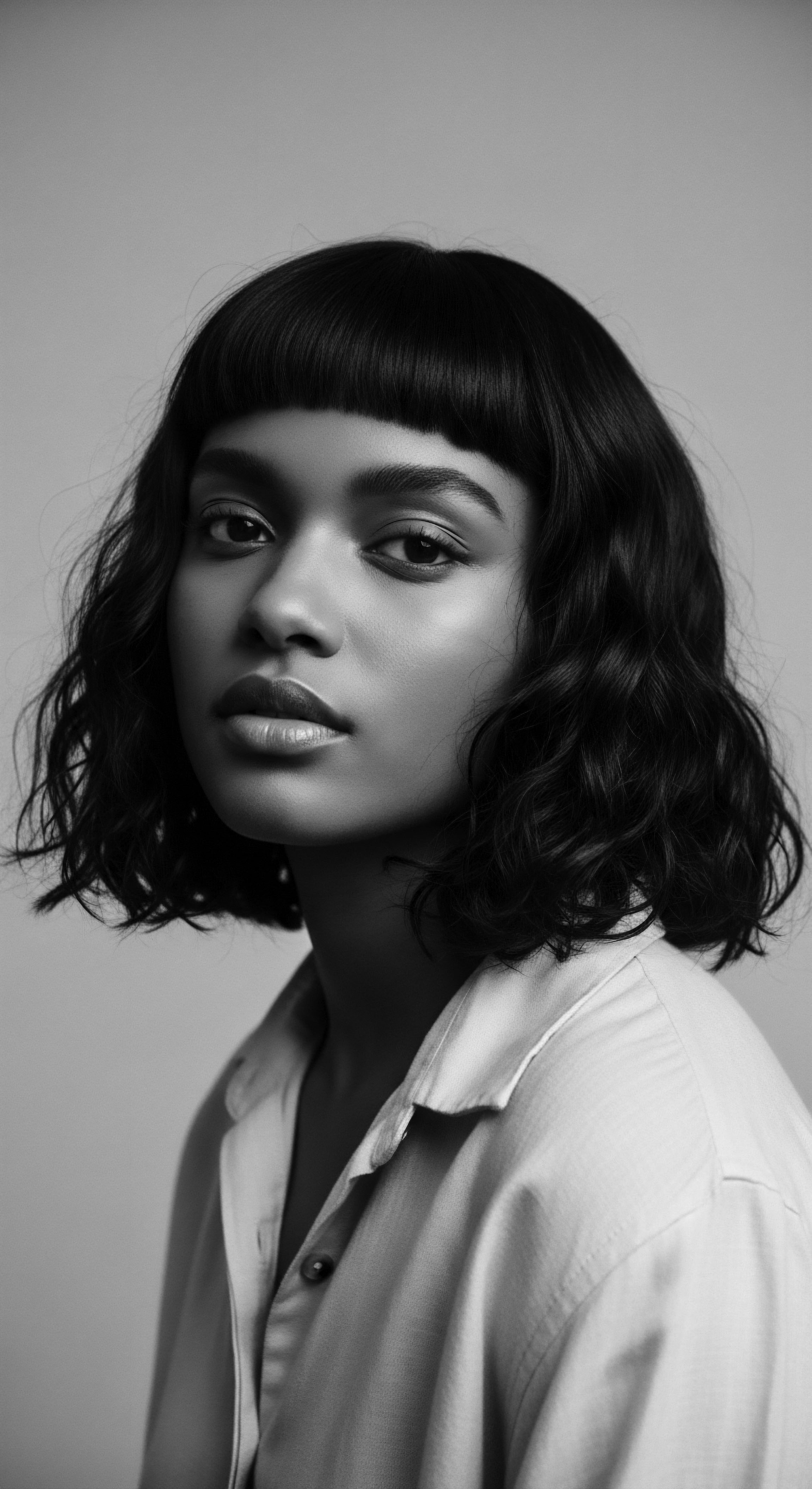
Relay
The echoes of ancient practices reverberate through contemporary textured hair regimens, often unbeknownst to those who participate. The modern understanding of hair science, while offering new vocabulary and microscopic insights, frequently validates the very wisdom our ancestors practiced for millennia. This continuity speaks to an intrinsic understanding of textured hair’s needs, passed through generations, defying the disruption of time and displacement. Our current approach to oiling is not a novel invention; it is a relay race of knowledge, with each generation carrying the torch of ancestral wisdom forward.

How Did Ancestors Address Hair’s Deeper Needs?
Beyond surface-level hydration, historical oiling practices targeted holistic hair health, addressing scalp conditions, promoting growth, and even protecting against environmental stressors. In traditional African societies, the massaging of scalps with oils was a common practice, aiming to keep hair healthy and ward off issues like lice. This shows an awareness of the scalp as the foundation of hair health, a tenet firmly held in modern hair care. The choice of specific oils often reflected their observed medicinal or protective qualities.
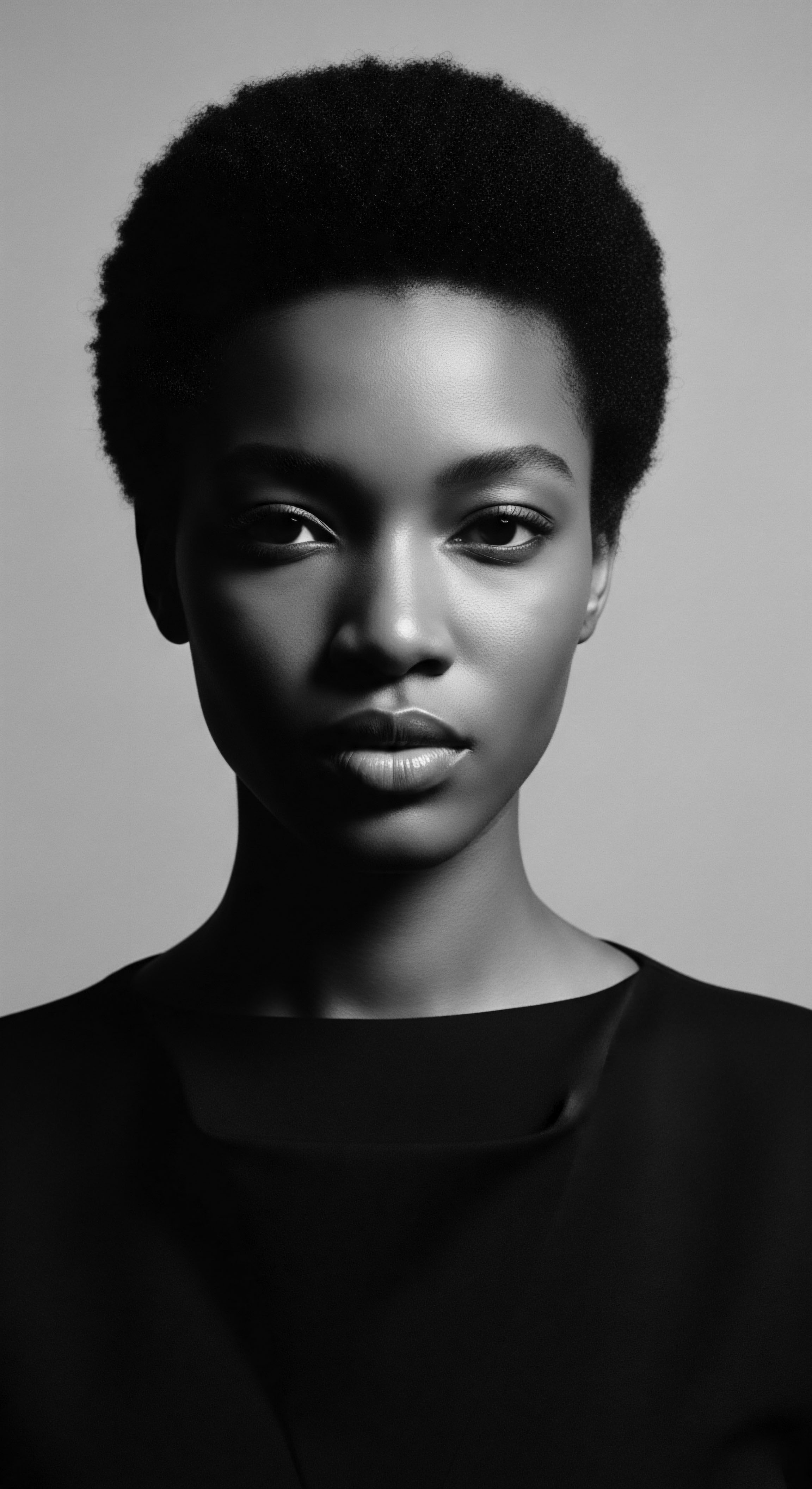
The Basara Women’s Chebe Tradition
A compelling specific historical example, perhaps less widely disseminated than other hair practices but rigorously documented, comes from the Basara women of Chad. Their centuries-old tradition involves applying a mixture of powdered herbs (known as Chebe) and oil, or sometimes animal fat, to their hair. This mixture is not applied to the scalp directly, but rather worked into the hair strands, which are then braided. The purpose is not curl definition, which is a common modern focus for textured hair, but rather exceptional length retention.
As documented by researchers and observers, the Basara women attribute their remarkable hair length—often reaching their ankles—to this consistent practice. (N. Ali, 2020, p. 77) The Chebe powder, composed of ingredients such as Lavender Croton, Prunus Mahaleb, and Clove, is believed to strengthen the hair shaft, reducing breakage, while the oils coat and protect the strands.
This case study powerfully illustrates how ancestral oiling practices, combined with specific botanical knowledge, directly addressed a core challenge for textured hair ❉ maintaining length by minimizing mechanical damage and maximizing moisture retention. It is a testament to the ingenuity and deep botanical understanding within these communities, offering a perspective on hair health that transcends purely aesthetic goals, focusing instead on inherent strength and preservation.
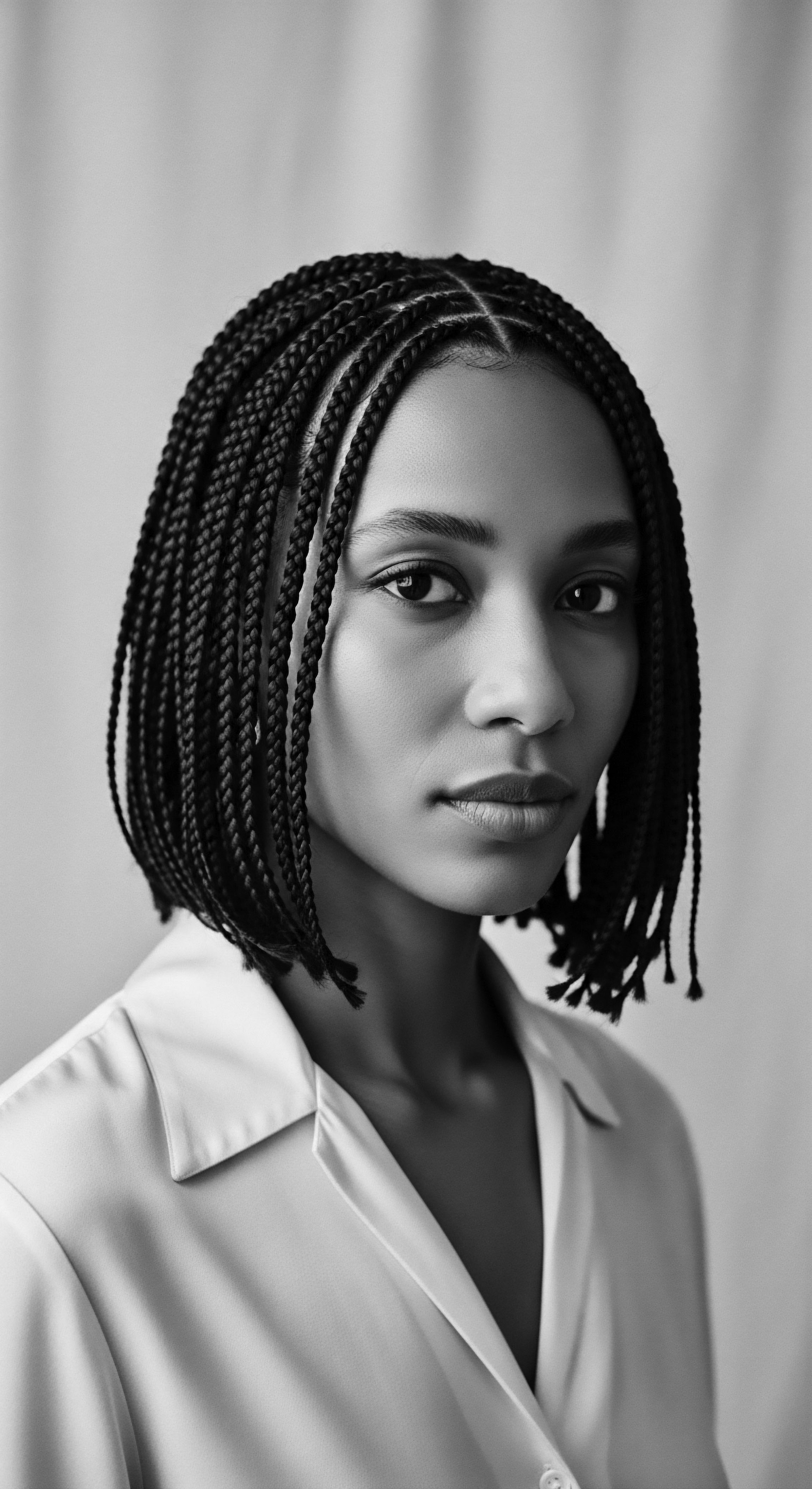
The Science Echoes Ancestral Wisdom
Modern science, through studies on the molecular structure of oils and hair, provides a contemporary framework for this ancestral wisdom. Coconut oil, for instance, has been studied for its ability to penetrate the hair shaft and reduce protein loss, especially during washing. This molecular penetration helps to reduce the swelling and shrinking of the cuticle, which contributes to overall hair damage. Similarly, the long-standing use of various natural oils and butters—like shea, coconut, and castor—in West African hair traditions to moisturize and protect hair in hot, dry climates aligns with current understanding of emollients and humectants.
These historical choices were driven by empirical observation, long before terms like ‘humectant’ entered our lexicon. The oils formed a protective sheath, preventing moisture loss and providing a buffer against environmental stressors, essentially performing the role of modern sealants and conditioning agents.
The Basara women’s Chebe tradition offers a powerful demonstration of ancestral oiling practices prioritizing exceptional length retention through botanical knowledge and protective styling.

Nighttime Rituals Inherited
The emphasis on nighttime care in modern textured hair regimens also has deep historical roots. Protecting hair during sleep, especially from the friction of cotton pillowcases, was a recognized need. Headwraps and bonnets, which have a complex history tied to Black culture, served this crucial purpose.
While their origins also carry the weight of subjugation during enslavement, when laws sometimes mandated their wear to signify social standing, Black women reclaimed these coverings as symbols of creative expression, resistance, and as vital tools for hair preservation. The bonnet, once a marker of control, transformed into a personal sanctuary, safeguarding coils and curls through the night, a legacy that lives on in the silk-lined bonnets of today.
A comparison of historical and modern oiling perspectives reveals enduring commonalities:
| Aspect of Oiling Primary Goal |
| Historical Practices (Heritage-Based) Hair and scalp nourishment, protection, spiritual significance, cultural identity. |
| Modern Regimens (Contemporary Application) Moisture retention, frizz reduction, shine, length preservation, scalp health. |
| Aspect of Oiling Application Method |
| Historical Practices (Heritage-Based) Often communal, involved extensive massage, part of styling rituals, warm application. |
| Modern Regimens (Contemporary Application) Individualized, pre-poo, leave-in, or sealant; can include scalp massage. |
| Aspect of Oiling Key Ingredients |
| Historical Practices (Heritage-Based) Locally sourced natural butters and oils (e.g. shea, palm, castor), infused with herbs. |
| Modern Regimens (Contemporary Application) A wide array of plant oils, essential oils, often blended with scientific compounds. |
| Aspect of Oiling Cultural Role |
| Historical Practices (Heritage-Based) Intergenerational knowledge transfer, community bonding, expression of status. |
| Modern Regimens (Contemporary Application) Personal wellness, self-care, connection to heritage, digital knowledge sharing. |
| Aspect of Oiling The essence of oiling textured hair remains constant ❉ a profound dedication to its well-being, passed through the generations. |

Holistic Care from the Past
The holistic approach to hair health, increasingly popular today, also finds its roots in ancestral wisdom. For many African communities, hair was intrinsically linked to overall physical and spiritual well-being. Oiling rituals were not isolated acts; they were integrated into broader practices of self-care and communal rituals.
The choice of oils and herbs often reflected an understanding of their medicinal properties for both hair and body. This deep, interconnected view of self and care is the true inheritance of our modern regimens.
- Marula Oil ❉ Favored in parts of Southern Africa, recognized for its conditioning properties.
- Aloe Vera ❉ Used in ancient times, particularly for its soothing and moisturizing benefits for scalp and hair.
- Black Seed Oil (Nigella Sativa) ❉ Utilized in traditional medicine across Asia, the Middle East, and Far East for skin and hair health, among other uses.

Reflection
The journey from historical oiling practices to modern textured hair regimens is not a simple linear progression, but a beautiful, spiraling helix, each turn echoing the one before it, yet reaching towards new horizons. Our present-day understanding, with its scientific validations and diverse product offerings, stands firmly on the shoulders of generations who instinctively understood and honored the unique nature of their hair. This continuous conversation between past and present is the beating heart of Roothea’s ethos ❉ a profound meditation on Textured Hair Heritage and its care, presented as a living, breathing archive.
The oils, the massages, the protective styles—these were never mere trends. They were vital expressions of identity, resilience, and an unwavering commitment to self-preservation in the face of adversity and neglect. They represent the ingenuity of ancestral hands, drawing from the earth’s bounty to meet the specific needs of hair that defied Eurocentric norms.
To engage in a modern textured hair regimen that incorporates oils is to step into a stream of ancestral wisdom, a quiet rebellion against historical erasure, and a conscious act of reclaiming one’s inherent beauty. It is to acknowledge that the remedies and rituals of our forebears were not primitive but sophisticated, born of deep observation and a reverence for the body.
In every drop of oil massaged into a scalp, in every section smoothed before a twist, we reconnect with a legacy that transcends time. We honor the quiet strength of those who, with limited resources, developed complex systems of care that continue to sustain us. The connection between historical oiling practices and modern textured hair regimens is a testament to the enduring power of heritage—a vibrant, continuous dialogue that reminds us that our hair is more than just strands; it is a profound link to who we were, who we are, and who we are becoming. It is a soul of a strand, eternally unbound.
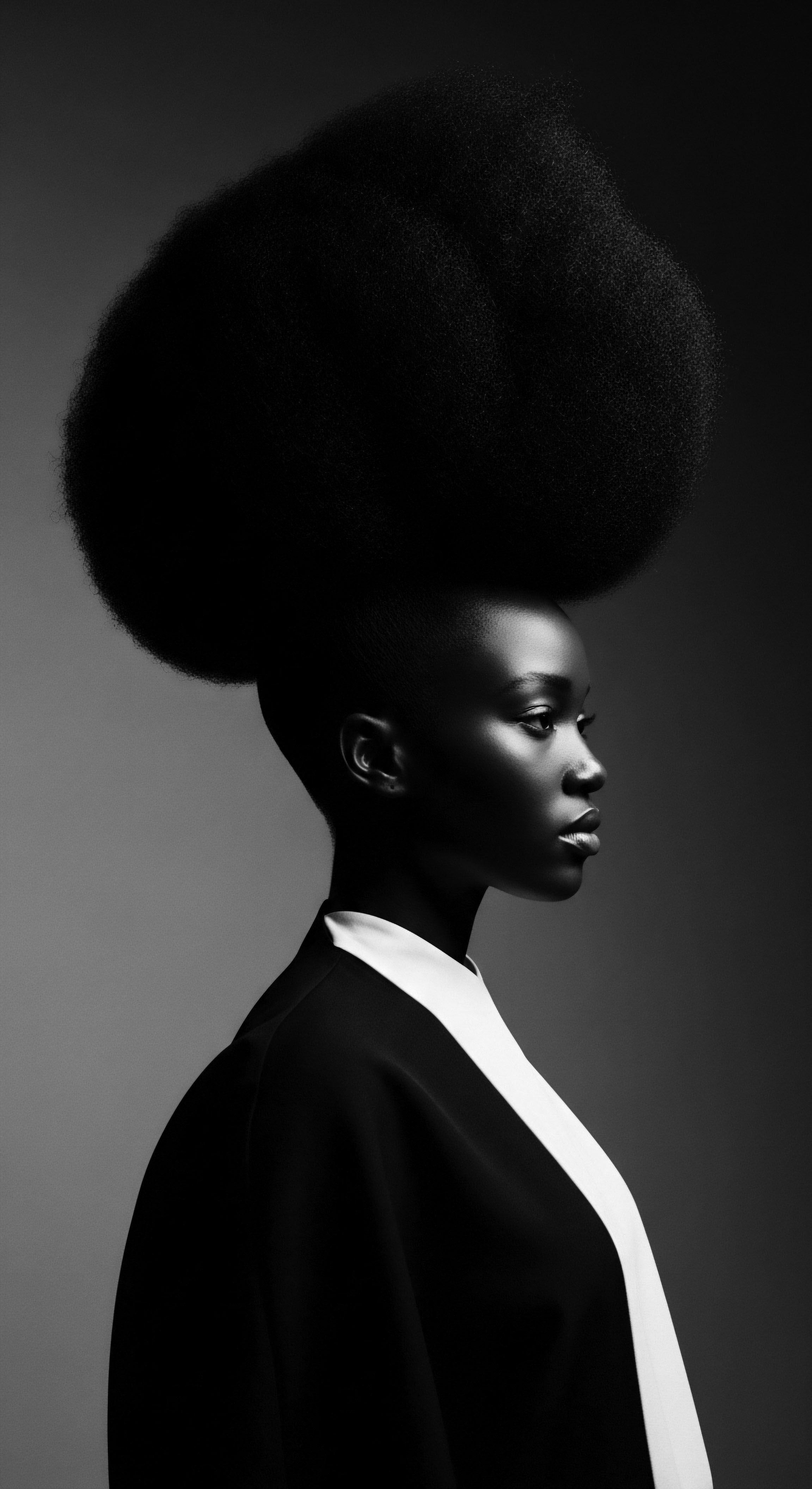
References
- Ali, N. (2020). The Science of Black Hair ❉ A Comprehensive Guide to Textured Hair Care. Independently Published.
- Byrd, A. D. & Tharps, L. (2001). Hair Story ❉ Untangling the Roots of Black Hair in America. St. Martin’s Press.
- Griebel, H. B. (1995). The African American Woman’s Headwrap ❉ Unwinding the Symbols. History of Anthropology Newsletter, 22(2), 16-20.
- Kerharo, J. & Adam, J. G. (1974). La Pharmacopée Sénégalaise Traditionnelle ❉ Plantes Médicinales et Toxiques. Vigot Frères.
- Robbins, C. R. (2012). Chemical and Physical Behavior of Human Hair (5th ed.). Springer.
- Sieber, R. & Herreman, M. (2000). Hair in African Art and Culture. Museum for African Art.
